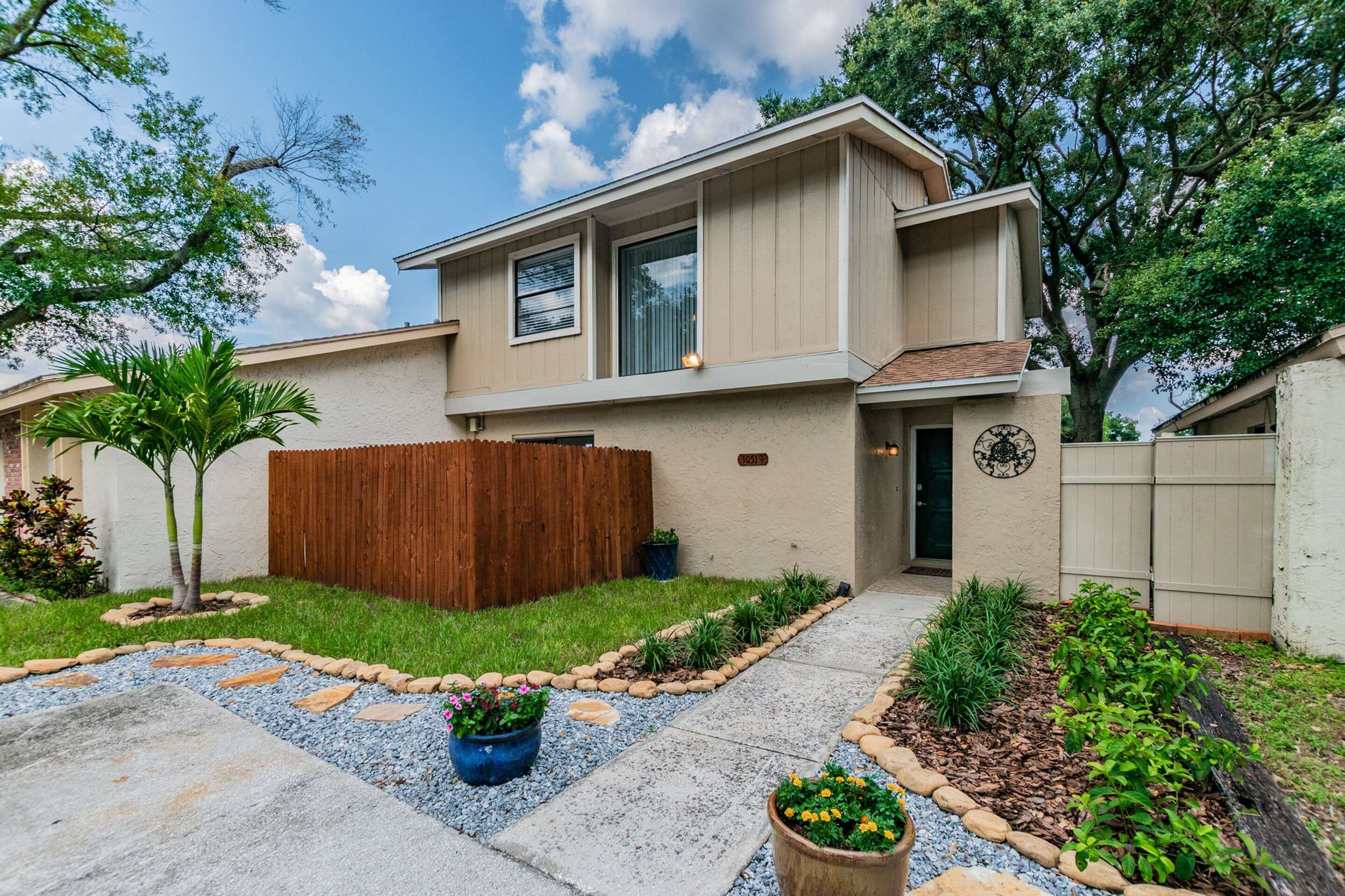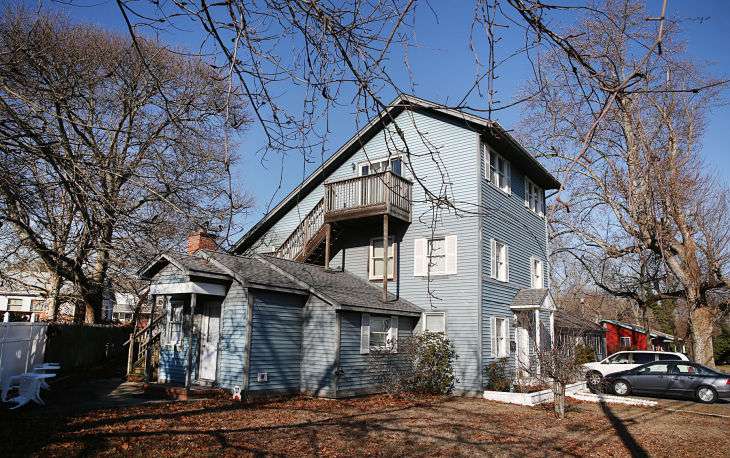How To Find Transitional Housing For Those In Recovery
Transitional housing, also known as sober living homes, are drug-free living environments for those attempting to abstain from drugs and alcohol long-term. The accommodation does not offer formal treatment, but its typical they will require you to attend 12-step programs that promote sobriety.
Transitional housing has long been an essential resource for those completing residential treatment, attending outpatient programs, leaving incarceration or seeking alternatives to formal therapy.
The earliest models of transitional housing began in the 1830s and were run by religious institutions like the YMCA, YWCA, and Salvation Army. Often referred to as dry hotels or lodging houses, they evolved as a means to find new ways and help people overcome their urges to drink alcohol.
Once World War II concluded, metropolitan areas began increasing in population, which also came with widespread alcohol-related problems. During this same span, the era of self-help recovery known as Alcoholics Anonymous was becoming more popular. In Los Angeles, recovering AA members opened a new step known as the 12th step. It addressed the increased need for alcohol and drug-free living environments, and managers of the houses either mandated or encouraged attendance at AA meetings to facilitate the residents recovery. By the 1960s, Los Angeles supported several dozen houses.
Burton & Sherman Places
Burton Place and Sherman Place are supportive Housing projects located in two single family homes located in Akron, Ohio. The home offers transitional housing to three males and four females respectively, who are recovering from drug or alcohol addiction. To be eligible to reside in the project residents must have a documented 60-day sobriety period.
Residents can stay up to 6 months, are provided private bedrooms and share common space. Common areas include kitchen, laundry, and living and green space.
Ohio Recovery Housing Finder
Recovery housing is characterized as a safe and healthy living environment that promotes abstinence from alcohol and other drugs and enhances participation and retention in traditional clinical treatment.
Ohio Recovery Housing is an alliance for individuals and organizations operating quality recovery housing in Ohio. ORH is a state affiliate of the National Alliance for Recovery Residences , which creates and maintains standards of excellence for recovery housing.
Using the Recovery Housing Locator search feature on the ORH website, you can search for recovery housing for yourself or someone else. Results will provide you with a list of options for counties that currently have an ORH Associate. The database is updated monthly.
Don’t Miss: How To Get Rid Of Nasal Spray Addiction
What Are The Rules Of A Sober Living Home
As the name implies, sober house residents must be drug and alcohol-free. If someone relapses, they must exit the sober living program and preferably return to inpatient treatment rather than go home. Each sober living program will have rules that fit their program, which may differ from other programs. However, a few common rules are applied for most sober living communities, including:4
- Working or volunteering occurs at most recovery residences
- Drug testing at every level of recovery housing
- Attending 12-step or other support groups
- Attending house meetings
Participation seems to be the most significant factor in sober living. Every time you participate in a recovery activity, you build recovery capital, the resources you can use to help you maintain sobriety. Examples of recovery capital include social and community involvement, living in a safe neighborhood where people get along, meaningful activities, and overall physical and psychological health.5 Sober living homes provide this and much more.
Does Transcend Provide Transitional Housing Programs

Transcend believes in providing holistic support to those reintegrating into society while recovering. Often, this requires supplying residents with a consistent and supportive living space while they acclimate to a new lifestyle.
The goal of transitional housing is to ensure that clients are equipped to handle life in society by the time their stay comes to an end while providing affordable housing to individuals. Our sober living arrangement works similarly to that of transitional housing, and we ascertain to create a comfortable environment that is most conducive to long-term recovery.
Transcend, along with the Heights Treatment, offers clients access to intensive outpatient treatment while they are residents. We attend to the need for aid and assistance, crisis or case management, while simultaneously providing suitable accommodation, through suitable housing accommodations for food and rent, for example.
24-hour staff, in addition to other residents, provide clients with families while in transitional housing facilities. There is also weekly communication with each clientâs treatment team member, as this person effectively communicates with doctors, the intensive outpatient treatment team, and parents during their stay in a temporary housing arrangement.
Don’t Miss: How To Beat Sugar Addiction
Transitional Housing For The Lgbtq Community And Allies
TRIMs mission is to provide housing with a stable environment conducive to maximizing recovery.
TRIM started in 2017 with the Gilbert House having the sole purpose of giving those in the LGBTQ community a welcoming, safe, and meaningful place to recover. The owner, having gone through sober living, knows the importance of being surrounded by supportive, loving and accepting people. We expanded in 2018 after acquiring the Jordan House to give more individuals the opportunity to recover. TRIM reflects its success through welcoming everyone home.
What Is Transitional Housing 8 Things You Need To Know
This post may contain affiliate links. If you complete a purchase using one of our links, we may receive a small commission at no extra cost to you. Learn more about our editorial and advertising policies.
Transitional housing has taken on different meanings and forms through the years.
But while peoples definitions of transitional housing differ and its structure varies, were here to help clear up any confusion as well as provide some nuance
n this article, well discuss what transitional housing is, transitional housing in the United States, why it exists, and resources to find transitional housing through the U.S.
Contents:
Also Check: How Can Addiction Be Prevented
What Does The Support Act Do
The SUPPORT Act allows HUD, with new funding from Congress, to establish a pilot initiative within the CDBG program for communities interested in improving housing options for people in recovery from a substance use disorder. The pilot:
- Targets housing to people with any substance use disorder .
- Establishes states eligible for funding as those with an age-adjusted drug overdose death rate above the national overdose mortality rate according to the Centers for Disease Control.
- Directs HUD to create a formula to distribute pilot funding to eligible states.
- Requires HUD to weight the funding formula toward eligible states with the greatest need. Greatest need is defined as states with high rates of unemployment, low rates of labor force participation, and high age-adjusted drug overdose rates.
- Allows people to have up to two years of housing assistance.
- Allows states to waive any CDBG requirements necessary to more easily use pilot project resources to serve people with substance use disorders, except fair housing, nondiscrimination, labor standards, and CDBG requirements that benefit low- and moderate-income people.
- Permits states to use up to 5 percent of these grant funds for administrative costs.
- Is authorized for five years .
Transition To A New Life Of Sobriety And Confidence
There are many different terms for the continued recovery care options available after completing intensive addiction drug rehab. Understanding what those terms are and what the best care program is can be difficult and daunting. Terms like sober living, halfway house, and transitional living, are used often interchangeably but the fact is they are all quite different and are defined by the level of accountability the tenant needs before going to back home.
With Vertava Health transitional living programs, clients now are required to live what theyve learned, from addiction treatment. There is an onsite pastor available 24 hours a day who knows where they are, why they are there and when they will return. They are required to have a job, can have a car or cell phone and even manage their own money. Random drug tests are performed and failure results in immediate ejection from the program.
However, if the client feels remorseful and wants to seek sobriety again, considerations will be made and depending on the level of drug failure the client may be given an opportunity to go back to treatment or continue again in transitional living.
Also Check: How To Stop Your Sugar Addiction
Significance Of The Study
Our study represents the first examination of sober living house residents using a longitudinal design. To date, our papers have looked at study findings in terms of the types of improvements residents make and factors associated with outcome, the substance of which has been summarized above. One of our aims here, however, is also to look at significance from the perspective of how SLHs might impact various service systems in the community. The promising outcomes for SLH residents suggest that sober living houses might play more substantive roles for persons: 1) completing residential treatment, 2) attending outpatient treatment, 3) seeking non-treatment alternatives for recovery, and 4) entering the community after criminal justice incarceration.
In Addition To A Safe Chemical
- Masters level therapist on site Monday through Saturday
- Community liaison on site 7 days per week
- Daily group therapy and house meetings
- Daily morning mediation and check-in groups
- Random drug screens
- 12-Step Recovery model
- Individual and group counseling
- Walking distance to public transportation, employment, volunteer opportunities, exercise facilities and the University of North Texas campus
For me, transitional living was a place to build an idea of what a healthy life looks like for me, in terms of my environment as well as relationships. Santé Alumni
Don’t Miss: How To Counsel Drug Addicts And Alcoholics
Transitional Housing Environments That Support Recovery
Recovery capital refers to anything you gain that supports recovery. Research shows specific types of recovery capital help you succeed in transitional housing environments, including:7
- Involvement in a 12-step facilitation group
- Encouragement to seek employment and gain skills
- Access to physical and mental health care
- Resolution of legal problems
Some transitional housing programs consider the homes architecture an excellent way to further support recovery for residents. Below is a summary of the research supporting five architectural qualities:8
Are You Looking For Confidential Help Available 24/7

- Access to the best rehab centers to overcome addiction
- Financial assistance program that gets you the help you need
- Clear answers to your questions on your road to recovery
01/13/2022|Susanne Reed, PhD
Completing an inpatient treatment program is a huge accomplishment. However, early recovery can be a vulnerable time. Some people are discharged with new social and recovery skills and sent back into their substance-using environment, but not everyone is ready to return home early in recovery. If you need more time away, consider sober living homes as a temporary alternative. A sober house gives you a place to practice your new skills in a substance-free, structured environment.1
In this Article:
You May Like: How To Get Over Drug Addiction
How Will I Know If My Application Has Been Accepted
All applications received by 5:00 p.m. Mountain Standard Time on December 17, 2021, will be reviewed. Applications will be assessed based on how well they meet the EOI assessment criteria and the overall desired outcomes of a Transitional sober/recovery housing program in the NWT . During the review process, an interdepartmental review committee may engage and assist applicants to provide further detail, including but not limited to planned program service delivery models, organizational capacity and partnerships, and implementation plans.
Benefits Of A Sober Living Home
A multiple-study review shows residents of sober living programs see positive results, such as a decrease in psychiatric symptoms, longer periods of abstinence, reduced criminal activity, and increased employment.8
When surveyed, residents noted additional benefits, including:9
- Having structure and routine
- Being held accountable for actions
Additionally, the Substance Abuse and Mental Health Services Administration reports four factors necessary to help people recover from substance use and co-occurring disorders adequately:11
- Encourage others to make good decisions about their health
- Give them a stable place to live
- Give them chances to be successful as productive members of society
- Build positive and supportive relationships
Recommended Reading: How To Stop Being Addicted To Food
Clean And Sober Transitional Living
CSLT is located in Sacramento County California and consists of 16 houses with a 136 bed capacity. Residency at CSTL is divided into two phases. Phase I lasts 30 to 90 days and is designed to provide some limits and structure for new residents. Residents must agree to abide by a curfew and attend at 12-step meetings five times per week. The purpose of these requirements is to help residents successfully transition into the facility, adapt to the SLH environment, and develop a stable recovery program.
The second phase allows for more personal autonomy and increased responsibility for one’s recovery. Curfews and requirements for 12-step attendance are reduced. All residents, regardless of phase, are required to be active in 12-step recovery programs, abide by basic house rules, and abstain from alcohol and drugs. A âResident Congressâ consisting of current residents and alumni helps enforce house rules and provides input into the management of the houses. Although the owner/operator of the houses is ultimately responsible, she/he defers to the Residents Congress as much as possible to maintain a peer oriented approach to recovery. In order to be admitted to CSTL prospective residents must have begun some type of recovery program prior to their application.
Pfs Transitional Living Program For Re
PFS Transitional Living Program for Re-entry Individuals: This is supported transitional living program using a scattered site model offered in NE and North Central Oklahoma for individuals exiting Department of Corrections or have had recent criminal justice involvement.Contact information is Grand Lake Mental Health Services, Denise Phelps, at:
Denise Phelps, BHCM,BHWC,CPRSS
Grand Lake Mental Health Center325 South Ash Street918-500-6509
You May Like: Can You Get Addicted To Marijuana
New Cdbg Funding Should Let Communities Provide A Variety Of Housing Options To Meet Peoples Needs
Housing is an important part of the continuum of services for people with SUDs, but its cost can be a huge barrier for low-income people needing treatment. There are several ways to address the housing needs of people with SUDs, including supportive housing, transitional housing , and rental assistance provided after inpatient treatment or during recovery.
Supportive housing combines affordable housing with intensive coordinated services to help people with chronic physical and behavioral health issues maintain stable housing and receive appropriate health and social supports. Typically, people are served using a housing-first strategy that doesnt require compliance with recovery services to receive assistance. Recovery housing is typically set in sober living communities where all residents share the goal of sobriety, and which helps people obtain both outpatient and onsite services and counseling. Post-treatmenttenant-based rental assistance can give people the financial support they need to live independently and maintain their recovery in housing of their choice.
HUD should ensure that potential grantees provide and coordinate the full array of housing options so people can find the option that meets their needs and the effectiveness of various models can be evaluated.
Are There Transitional Living Programs Specifically For Men And Women
Gender-specific transitional housing assistance resources are helping the youth at risk while undergoing post-substance abuse or drug addiction treatment recovery. These specific transitional housing programs are offered as endorsed by case management workers not just for youth but adult men and women as supportive housing for their crisis.
While this is not a permanent housing solution, it helps end homelessness while providing transition housing opportunities and services for high risk of domestic violence from broken families. These operate in separate apartment housing for men and women where they can thrive and restore hope from their situation.
These work hand in hand with additional resources like young adult treatment and adolescent mentoring programs to promote self-sufficiency and reconnect them with their families.
Recommended Reading: What Makes Cat Treats So Addictive
What To Prepare Before Calling Our Helpline
Before calling our helpline to speak with one of our admissions navigators, youll want to prepare specific information to provide them. This information will help our compassionate and caring admissions consultants in finding you a few appropriate treatment options. Make sure you know the following information:
- Your insurance plan, company, and policy number
- How severe the drug or alcohol abuse is
- All of the substances that are being abused
- The duration of substance abuse
- Any medical limitations or concerns, such as pregnancy, diabetes, heart disease, etc.
- The presence of any co-occurring psychiatric conditions
- How you or your loved one plans to travel to the facility
Generally speaking, the more information you are able to provide, the better.
About Our Transitional Living Program

Safe, sober housing is crucial for newly recovering alcoholics and addicts. Tranquil Shores’ drug abuse treatment center, located on a barrier island off of Florida’s west coast, offers acomprehensive program that includes:
- a safe, sober living environment
- weekly meetings with a personal recovery mentor
- community support
- staff support from our licensed and certified experts
We maintain a3:1 client-to-counselor ratio, making sure that you get the personal help you need.Transitional housing space is limited and acceptance to this program is based upon availability.
In addition, clients must qualify by completing one of oursubstance abuse treatment programs and demonstrating that they are stable in their recovery.This program is not a substitute for substance abuse treatment.
Don’t Miss: How Much Money Does An Addiction Counselor Make
